The Spanish Steps in Rome
The magnificent stairway of Trinità dei Monti, an eighteenth-century masterpiece, was built between 1723 and 1726 by the architect Francesco De Sanctis. The structure served as a link between the slopes of the Pincio dominated by the church of the Santissima Trinità and the underlying Piazza di Spagna. The stairway, in travertine, is made up of a series of ramps, 11, each made up of 12 steps, which divide and reunite, constantly changing direction. From any position it is possible to enjoy a magnificent panorama of the square
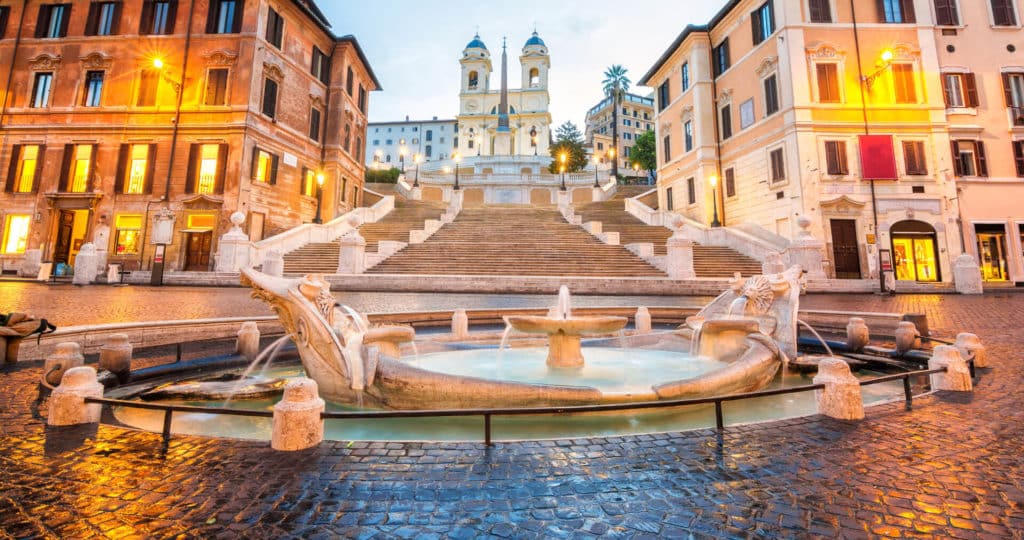
De Sanctis managed to get the better of the project presented by Alessandro Specchi after long and heated discussions on how the steep slope on the Pincio side should be connected to the church.
The staircase was made famous by cinematography but above all by the love of tourists who, before the Coronavirus emergency, used to crowd it (and not only them) at any time of day.
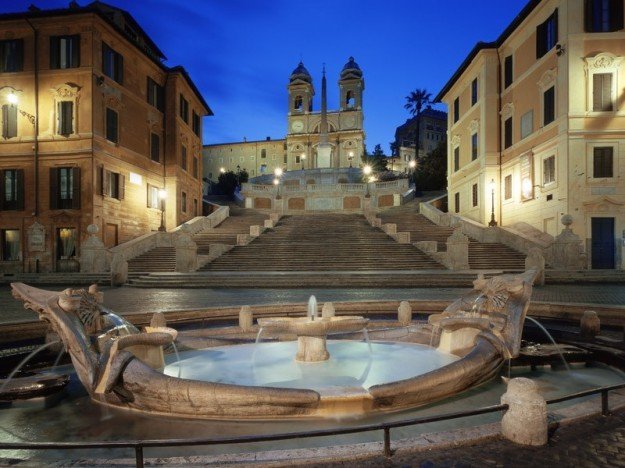
A series of balustrades accompanies the ramps: they interrupt the difference in height and serve as a resting point and to admire the landscape.
The 135 steps of the square are well known in the fashion world: here the famous Women Under the Stars fashion show is celebrated. This event is held in mid-July, the date in which Piazza di Spagna dresses up in gala.
It is pleasant to sit on the steps of Piazza di Spagna, a meeting place for many Romans and a resting place for tourists wandering around the city.
The stairway seems to rest on the hill articulating itself in a continuous alternation of protrusions and recesses, and is the expression of a monumentality typical of the Roman eighteenth century (for example the port of Ripetta, demolished at the end of the nineteenth century, and the Trevi fountain).
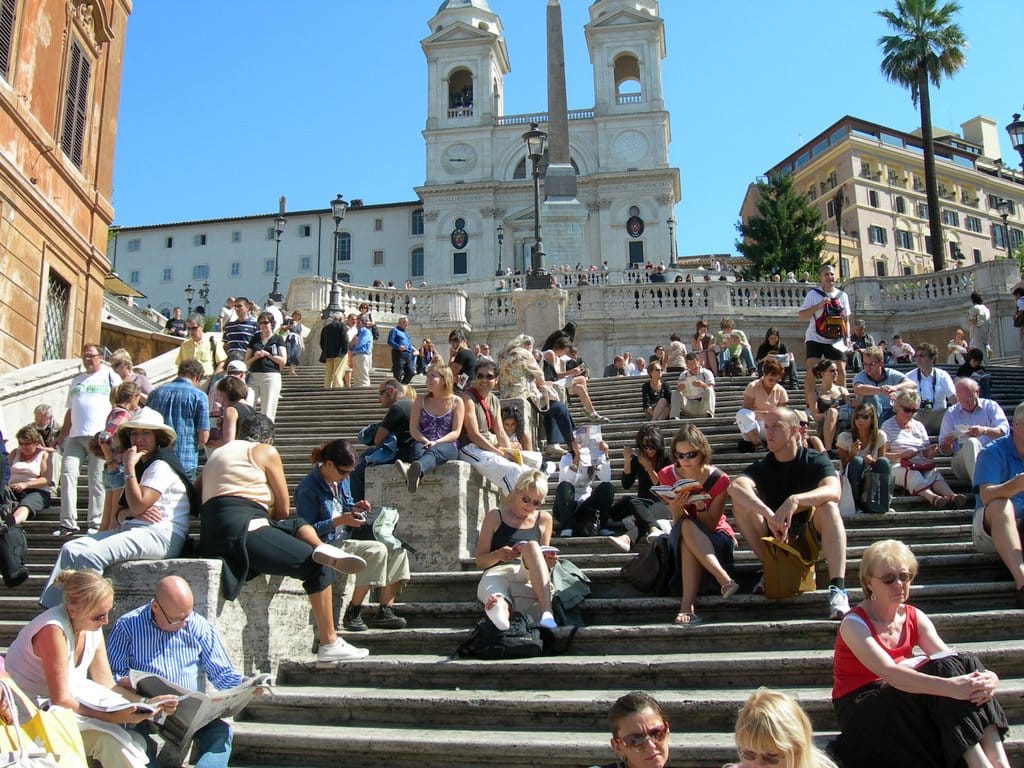
Subjected to numerous maintenance interventions over time, the staircase underwent an important complete restoration in 1995 and subsequently in 2015, thanks also to the funds donated by the famous Bulgari fashion house.
Piazza di Spagna owes its name to the Palazzo di Spagna, seat of the embassy of the Iberian state in the nearby Vatican.
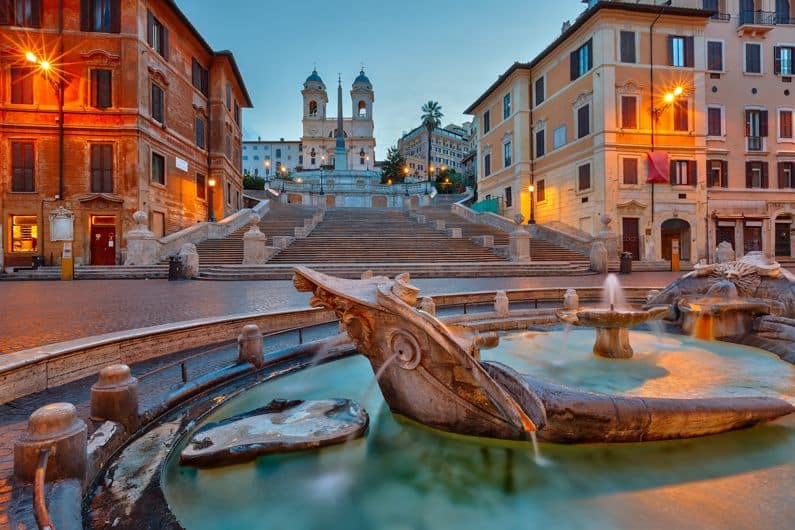
In the center of the square is the famous Fontana della Barcaccia, which dates back to the early Baroque period, built by Pietro Bernini and his son, the more famous Gian Lorenzo.
The monumental staircase was inaugurated by Pope Benedict XIII on the occasion of the Jubilee of 1725: it was built, thanks to French funding starting in 1721, to connect the embassy of the Bourbons of Spain, to which the square owes its name (which in the 17th century was “Piazza di Francia”), to the church of the Trinità dei Monti.
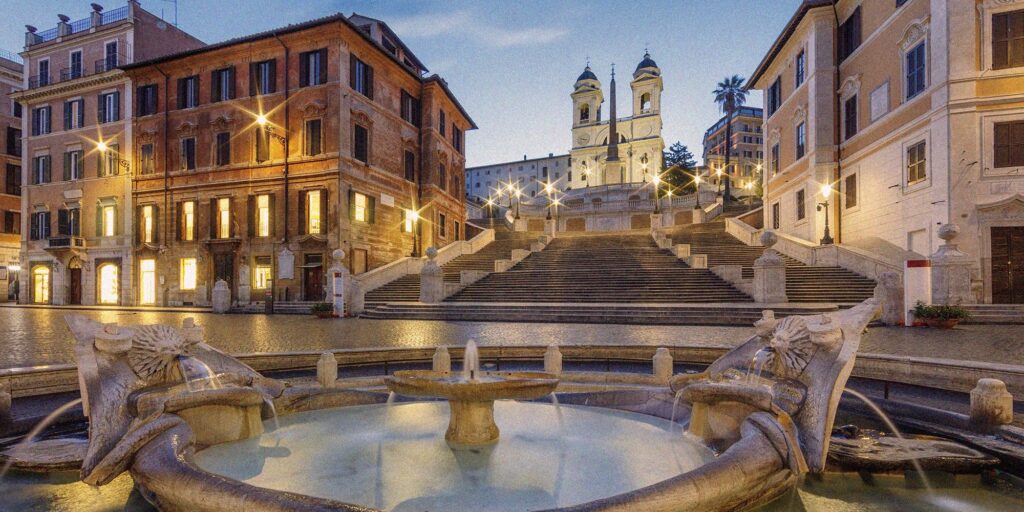
The winning project was that of De Sanctis who imagined a large staircase decorated with numerous garden terraces, decorated in spring and summer with many flowers. The stairway was designed in such a way that as you get closer the scenic effects increase from time to time, a typical element of Baroque architecture.
